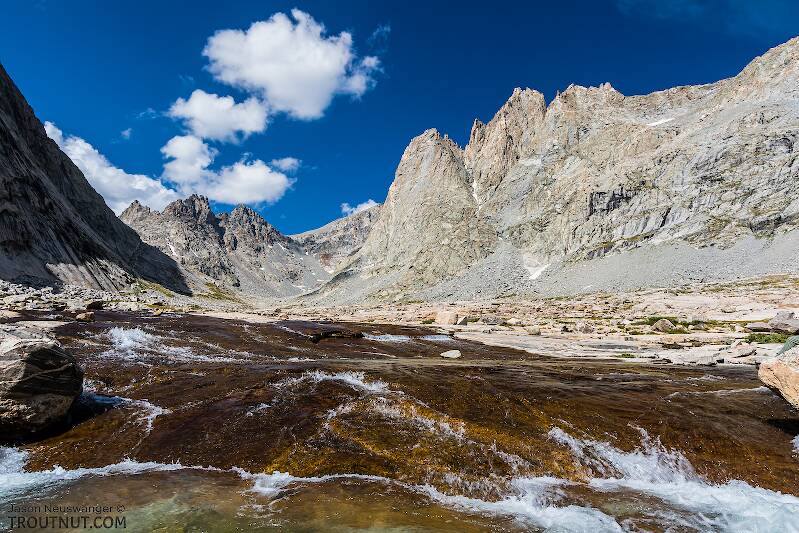
Salmonflies
Pteronarcys californica
The giant Salmonflies of the Western mountains are legendary for their proclivity to elicit consistent dry-fly action and ferocious strikes.

Mayfly Species Nixe lucidipennis
Where & when
The only fly fishing book in which I've found a mention of this species is Mayflies, the Angler, and the Trout. Arbona says there are "fair hatches" of in northern Wisconsin and Michigan, although it has not turned up in my samples.In 13 records from GBIF, adults of this species have been collected during July (85%), June (8%), and August (8%).
In 2 records from GBIF, this species has been collected at elevations of 3 and 26 ft.
Species Range
Physical description
Most physical descriptions on Troutnut are direct or slightly edited quotes from the original scientific sources describing or updating the species, although there may be errors in copying them to this website. Such descriptions aren't always definitive, because species often turn out to be more variable than the original describers observed. In some cases, only a single specimen was described! However, they are useful starting points.
Male Spinner
Wing length: 7 mm
Mesonotum dark brown; abdominal tergites largely brown; genitalia of the lucidipennis type.
Frontal portion of head very slightly shaded with brown; vertex dark brown or reddish. Thoracic notum dark brown; pleura and sternum light yellowish. Femora of fore leg dark, those of the middle and hind legs yellowish. Basal joint of fore tarsus about 1/4 the length of the second; in the hind leg, the basal tarsal joint is distinctly longer than the second joint, all joints of this tarsus being relatively long for the size of the species. Wings hyaline; longitudinal veins slightly dusky, especially the costa and subcosta; cross veins wholly colorless. Abdominal tergites blackish brown, by the original description; Dr. McDunnough states that this species has paler coloration than H. rusticalis (now a synonym of Nixe rusticalis), and with less distinct markings. Sternites pale. Forceps base and penes yellow; forceps tinged with black. Tails pale, the basal portion tinged slightly with black. Penes with a prominent inner apical projection or lobe; on the ventral surface of each division of penes is a rather prominent spine (see fig. 97). In H. rusticalis, the inner apical lobe is not so well developed, and the spines on the ventral surface are usually lacking.
Start a Discussion of Nixe lucidipennis
References
- Arbona, Fred Jr. 1989. Mayflies, the Angler, and the Trout. Nick Lyons Books.
- Needham, James G., Jay R. Traver, and Yin-Chi Hsu. 1935. The Biology of Mayflies. Comstock Publishing Company, Inc.
Mayfly Species Nixe lucidipennis
Species Range
Resources
- NatureServe
- Integrated Taxonomic Information System
- Global Biodiversity Information Facility
- Described by Clemens (1913)


